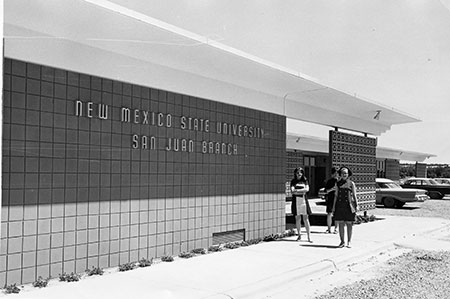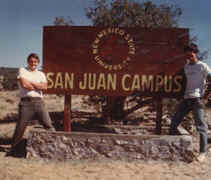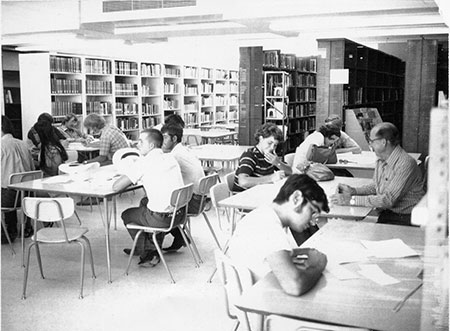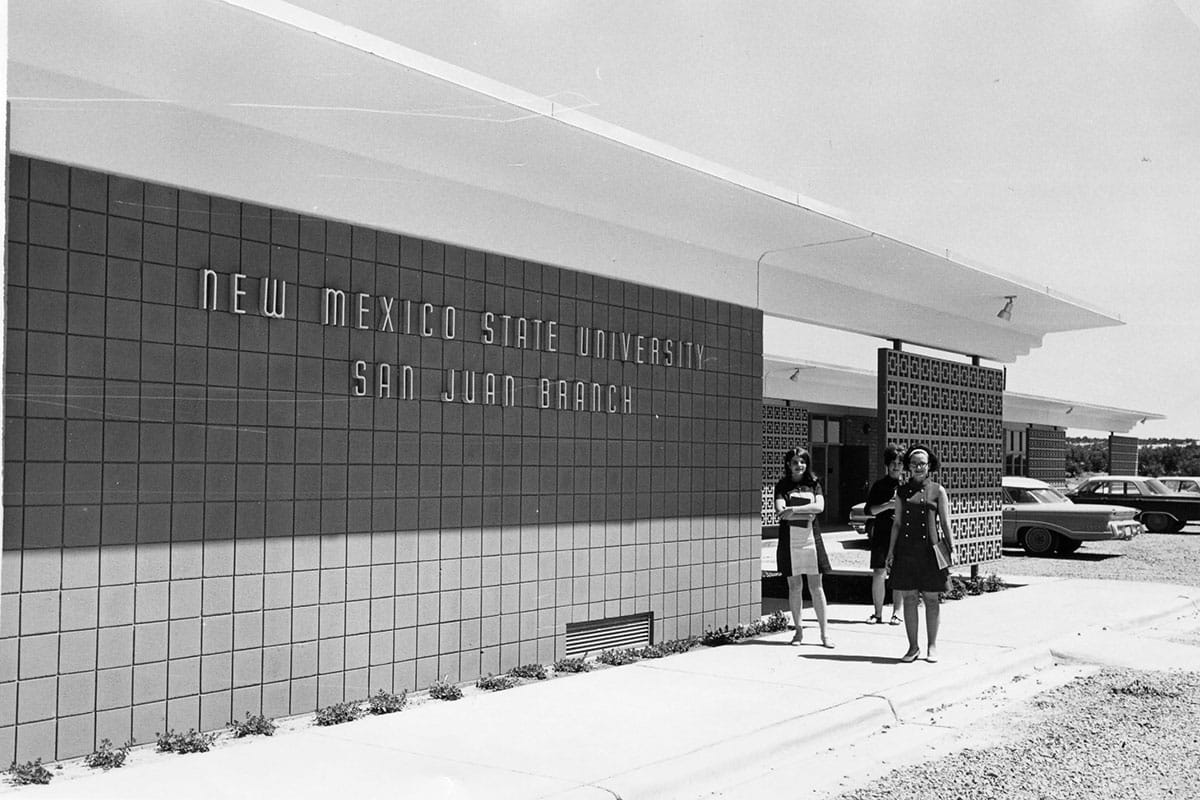San Juan College was founded in 1956 as the Farmington Branch of the New Mexico College of Agriculture and Mechanical Arts, in accordance with statutes of the State of New Mexico. All classes were initially taught by part-time instructors during evening hours in facilities at Farmington High School. In 1958, the name was changed from Farmington Branch to San Juan Branch, NMSU. This name better indicated the area served by the branch. 
In July 1965, the Farmington Board of Education allowed the college to use full-time, a building on North Wall Avenue near downtown Farmington. This space allowed for full-time day and evening instruction; however, laboratories and other special facilities at Farmington High School were still used for evening instruction.
During the 1966-67 year, applications for a federal grant to assist in the construction of a separate facility for a branch campus were prepared and approved. The Farmington City Council returned to the Bureau of Land Management 590 acres of land, previously obtained by the city for park and recreational purposes, with the promise that the land be made available to New Mexico State University (NMSU) for branch campus development. Thus, with the first building constructed in 1967-68, San Juan Branch had a permanent site in the northern part of Farmington.
Also during the 1967-68 academic year committees composed of members from all areas of the county prepared a feasibility study for an area vocational-technical school at the San Juan Campus. An operating agreement between the Board of Regents, NMSU, and the Boards of Education of Aztec, Bloomfield Municipal, Central Consolidated, and Farmington Public Schools was executed. On August 10, 1968, the New Mexico State Board of Education designated San Juan Branch an area vocational-technical school.
From the first phase of construction in 1967 to 1981, the college as a branch campus experienced three successful local bond issues to substantially support three of the college’s major construction projects, four phases of construction, several marked changes in administrative structure, and rapid enrollment growth.
Campus facilities increased from 16,384 square feet of space in 1967-68 to 87,442 square feet in 1981, while enrollment in credit courses during the same period increased from 395 to 1604 students. As the community and local school districts invested more money and support in this university branch campus, the natural desire for more local control and autonomy arose. State laws were amended in 1980 to make such a transition possible. Petitions were circulated and a feasibility study for college independence was completed in August 1981. A county-wide election was held on November 17, 1981, which resulted in 87 percent of those voting in the four San Juan County school districts approving of separation from NMSU and financial support for a newly created junior college district. On July 1, 1982, an independent and separate community college known officially as Junior College District of San Juan County, and informally as San Juan College, came into being.
The fifth facility project followed independence and allowed for the expansion primarily of the library and student center. Groundbreaking took place on March 27, 1984, and when completed, added an additional 19,260 square feet to the physical complex. These new facilities were in full use by January 1985. 
Phase VI in the San Juan College facilities master plan was a Computer Science Technology Building. Ground for this new 20,000 square foot facility was broken in the spring of 1986 and the building was completed in December 1986. During 1986, the college was further extended into the community with the opening of San Juan College East Center in Aztec and also a Small Business Development Center in downtown Farmington (now relocated to the main campus).
Since 1986, the college has established a San Juan College West Center in Kirtland (1987-88), occupied expanded vocational facilities in fall 1989, and opened an Early Childhood Development Center in January 1990. In August 1988 the voters of San Juan County approved a $12 million bond issue for further campus expansion by a vote of four to one. Construction of additional science, health, and general classroom facilities began in the fall of 1990 and was completed August 1991. Groundbreaking for a new 83,000 square foot fine arts facility with a theatre and music performance hall, arts and music complex, and community meeting rooms took place in the summer of 1992 and was completed in August 1994. A new 32,000 square foot Educational Services Center, which relocated administrative and student service offices together in one facility to better serve students, was completed and occupied in December of 1995. In December 1997 a 36,000 square foot addition to the Computer Science Technology Building was dedicated with classes held in the new addition in the spring 1998 semester.
With the completion of the Computer Science Technology Building addition, the campus consists of ten buildings and three off-campus facilities occupying a total of more than 526,300 square feet, and representing a value of more than $60 million. In 1999, the Advanced Technology/Enterprise Center and the Early Childhood Development Center has increased the multi-campus facilities to about 576,300 square feet. Additionally, the College constructed the Health and Human Performance Center (funded by a $12 million county wide bond issue passed by voters in September 1998) of about 129,000 square feet, it was completed in 2000. The College supports a wide variety of instructional and support activities for academic transfer, career education, and non-credit enrichment activities. From its modest start in 1956 with 25 students, the College now has a fall credit enrollment of more than 8700 students. Staff size has grown from a handful of part-time instructors to a present complement of just over 150 full-time faculty members and nearly 300 adjunct faculty. The College employs a total of 975 men and women (fall 2011), which includes full-time regular employees (faculty and staff), adjunct faculty, and temporary staff.

